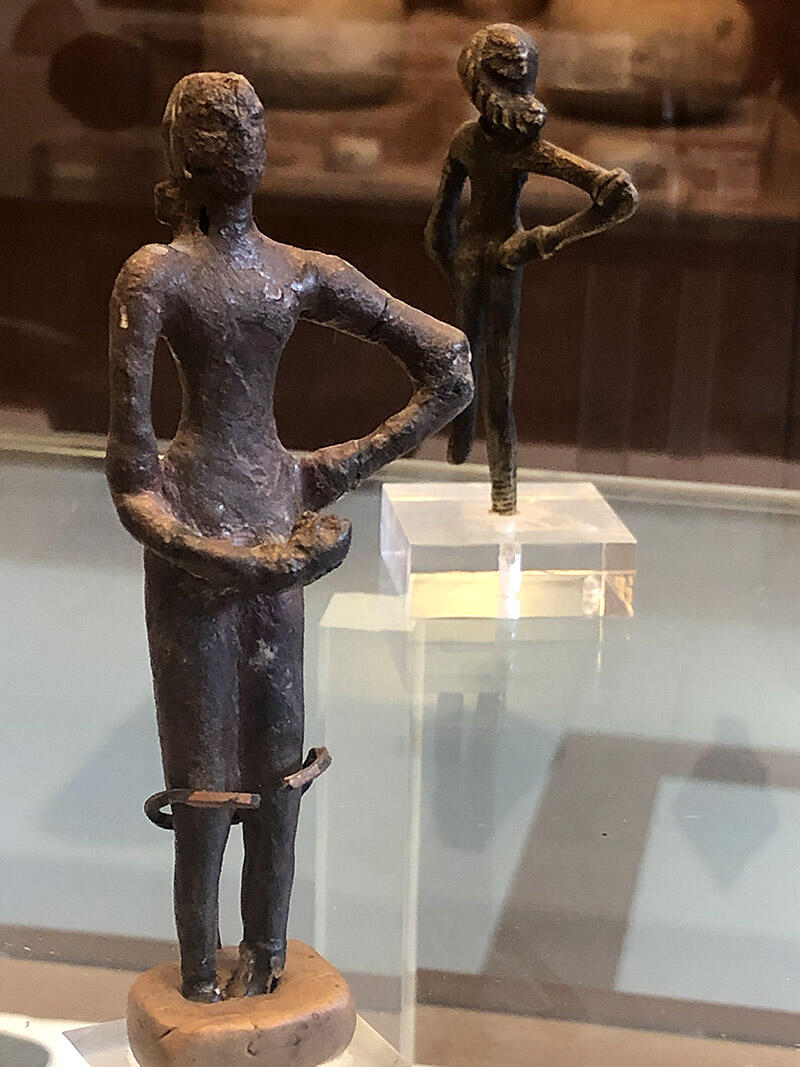The female figurine, shown here with a replica in the background of the well-known "dancing girl" of Mohenjo-daro (original at the National Museum of India in New Delhi), may or may not be a dancing girl.
Dr. Jonathan Mark Kenoyer writes in Ancient Cities of the Indus Valley Civilization writes (p. 135):
"Although most figurines were made of terracotta, excavators have recovered a few bronze sculptures that render women wearing ornaments and holding an object similar to a bowl in the left hand. In one example from Mohenjo-daro, the hair is tied in a horizontal bun hanging low on the back of the neck and traces of long-almond shaped eyes are visible (fig. 7.24). Many bangles adorn the upper left arm and a few bangles are indicated above the right elbow. Because these bronze figurines are not copies of terracotta
figurines, they may have been made for a specific ethnic community or perhaps used in special rituals that required bronze votive statues. But, unlike terracotta figurines that break and are discarded, bronze can be melted and recycled for other objects. The few bronze sculptures recovered reflect a high level of skill in modeling and lost-wax casting, a well-established [craft] in the first cities that continues to the present throughout the subcontinent."
The catalogue description later in his book adds (p. 223):
"Female figurine stands with left arm on hip and right hand holding a small bowl in front of the waist. The hair is tied in a horizontal bun hanging low on the back of the neck, and traces of long almond-shaped eves are visible. Many bangles adorn the upper left arm, and a few bangles are indicated above the right elbow."
Material: Copper/Bronze
Dimensions: 13.2 cm height, 4.7 cm width Mohenjo-daro, DK 12728
National Museum, Karachi, NMP 50.883 Mackay 1938: 274, pl. LXXIII, 9-11

